This wonderful Cornish workshop and museum is dedicated to the legacy of studio pottery trailblazer Bernard Leach
Eight unmissable objects from Tutankhamun: Treasures of the Golden Pharaoh at the Saatchi Gallery
Eight unmissable objects from Tutankhamun: Treasures of the Golden Pharaoh at the Saatchi Gallery
10 Nov 2019
Since Howard Carter’s discovery of Tutankhamun’s tomb in 1922, the legend and treasures surrounding the boy-king have become a source of global fascination. Born in c.1342 BC, Tutankhamun became pharaoh aged just nine years old, and is believed to have died a few years later, around age eighteen. Following Tutankhamun’s death, the memory of the king was forgotten for millennia, until Carter and his team found a rubble-filled stairway in the Valley of the Kings. From amulets and life-size statues to gilded chests and furniture, a new exhibition at London’s Saatchi Gallery brings together more than 150 original objects from the pharaoh’s tomb. Here, we reveal some of the treasures to look out for.
Tutankhamun’s canopic coffin
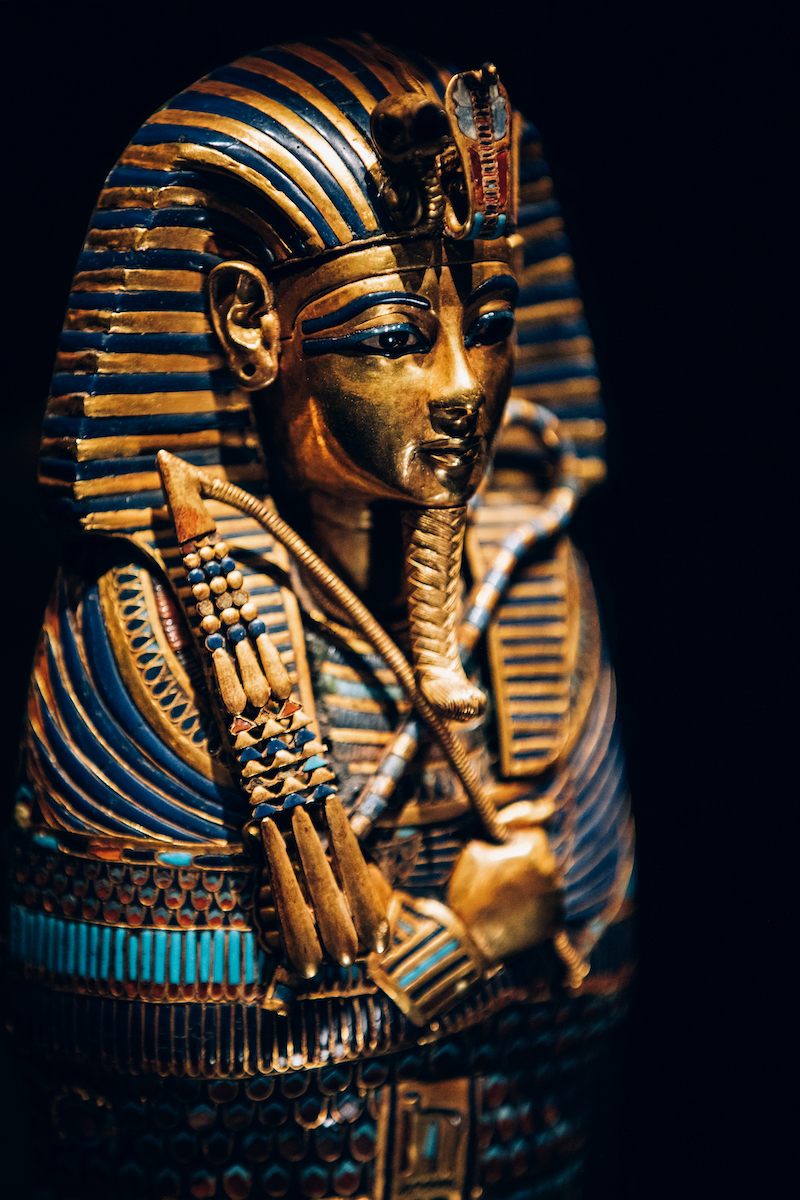 IMG
IMG
Adorned with gold, coloured glass and carnelian, this elaborate coffinette was used to store Tutankhamun’s liver, the organ protected by the gods Imseti and Isis. During the mummification process, the deceased’s internal organs (with the exception of the heart), were removed, embalmed and placed in canopic jars. This is one of four jars that were found in a calcite chest, topped with a lid bearing the bust of the pharaoh.
Ostrich fan
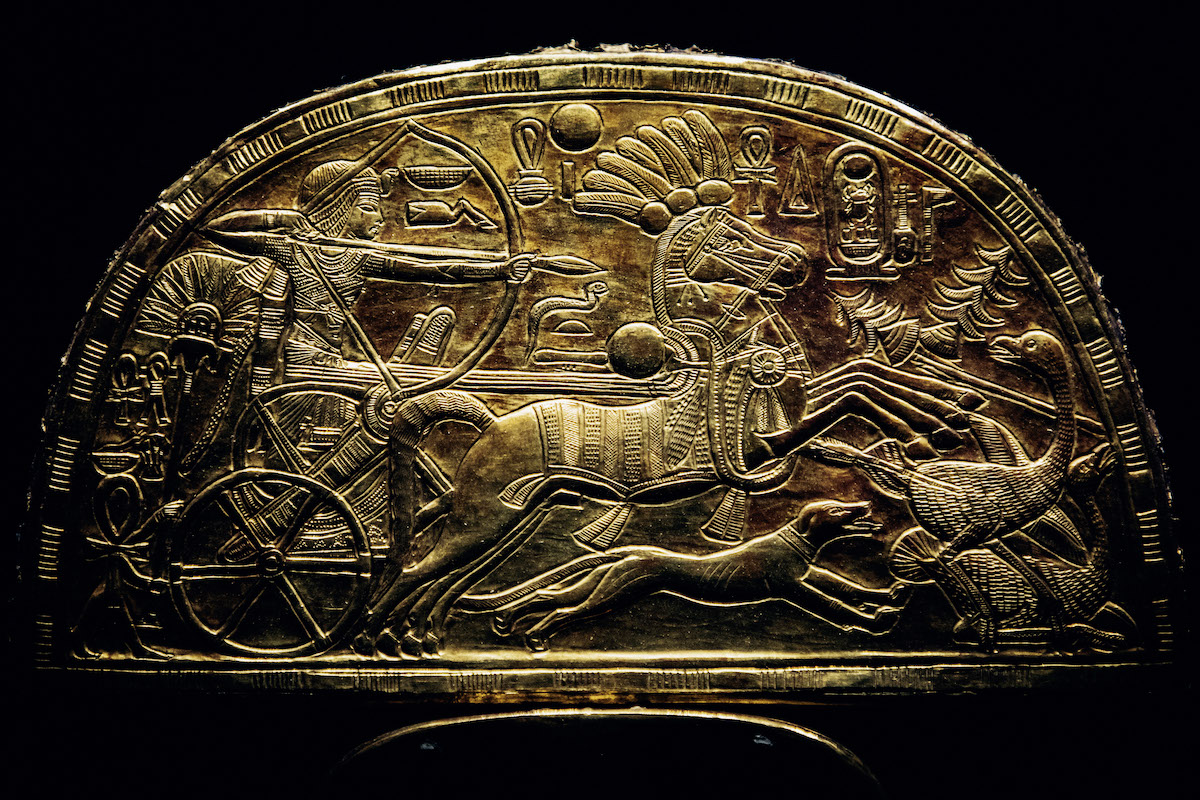 IMG
IMG
This gold, semicircular object forms part of an ostrich-feather fan, which was found close by the pharaoh’s body. It shows the boy king in a chariot, poised to launch an arrow at a large bird. Tutankhamun was a keen hunter, and an inscription on the golden handle at the base of this picture reveals that he hunted ostriches in the desert near Heliopolis (close to modern-day Cairo). The fan would originally have supported 42 ostrich feathers.
Gilded mirror case
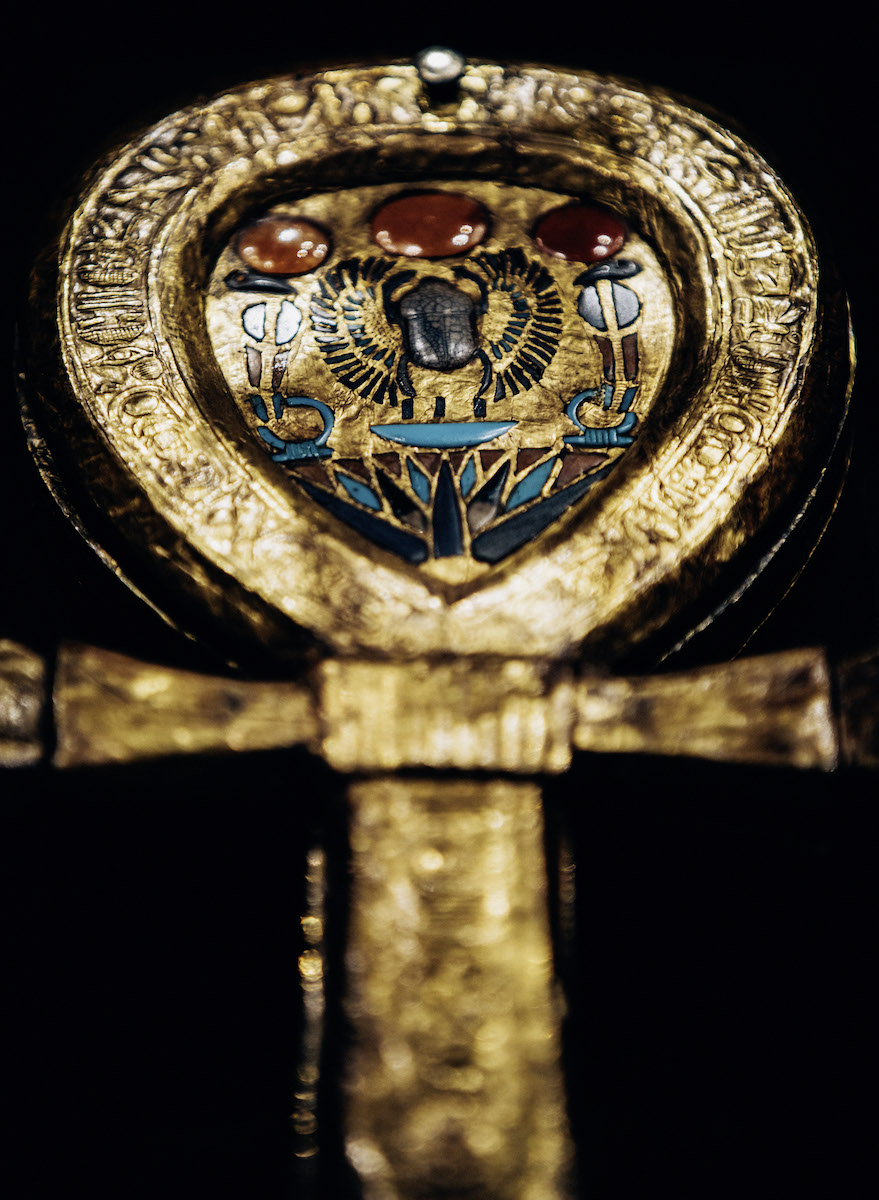 IMG
IMG
Decorated with gold leaf, this wooden mirror case is inlaid with blue glass and carnelian. It is in the shape of an ankh, an Egyptian symbol of life. In Ancient Egypt, mirrors were symbols of resurrection and eternal life.
Cartouche box
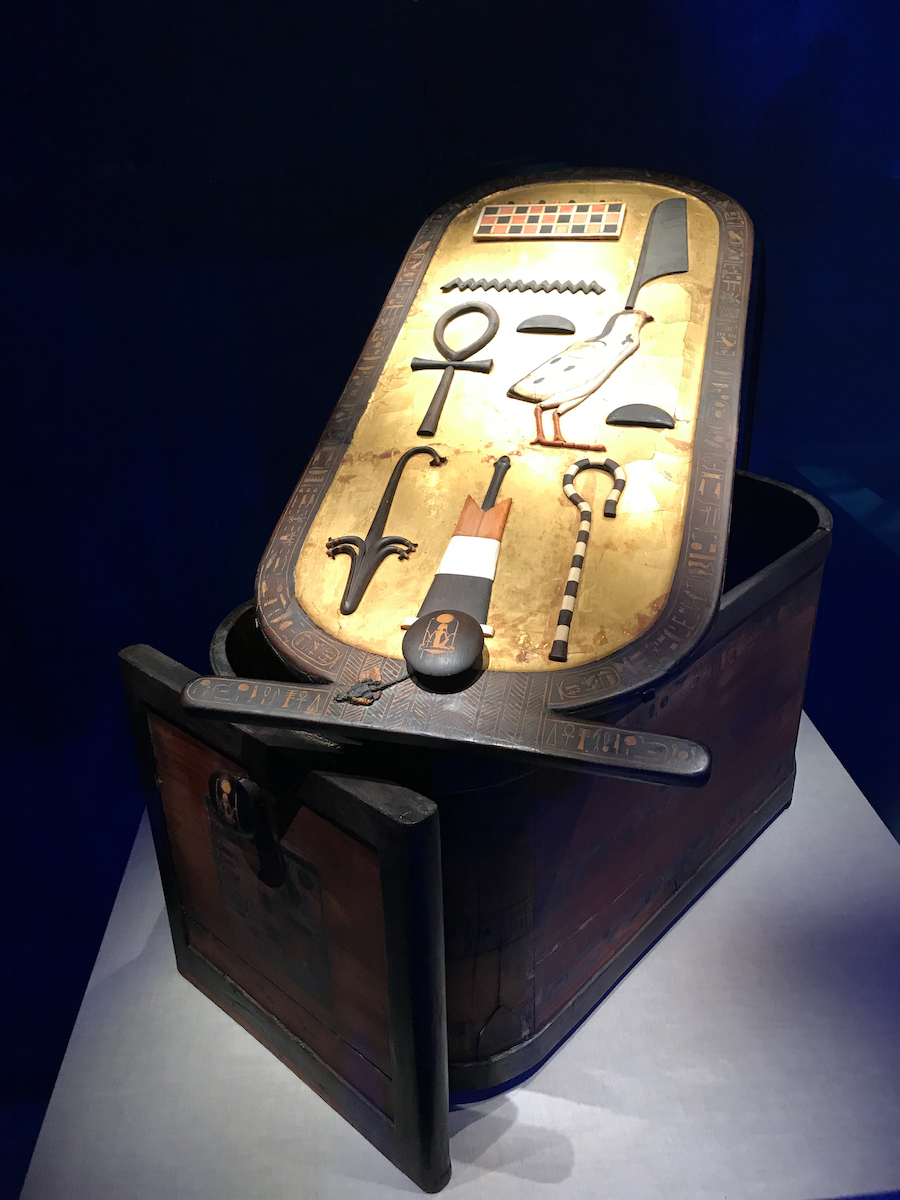
Ebony and ivory hieroglyphics on the lid of this box proclaim Tutankhamun’s birthname, ‘Tutankhamun, Lord of Southern Iunu (Thebes)’. Literacy in Ancient Egypt was limited (it is estimated that less than one per cent of the population were literate), but it is likely that Tutankhamun was able to read and write. This box is in the shape of a cartouche, an oval shape that encircled the names of royalty in hieroglyphics. Inside, it contained a smaller box, which was filled with treasures including jewellery, and crooks and flails.
Guardian statue
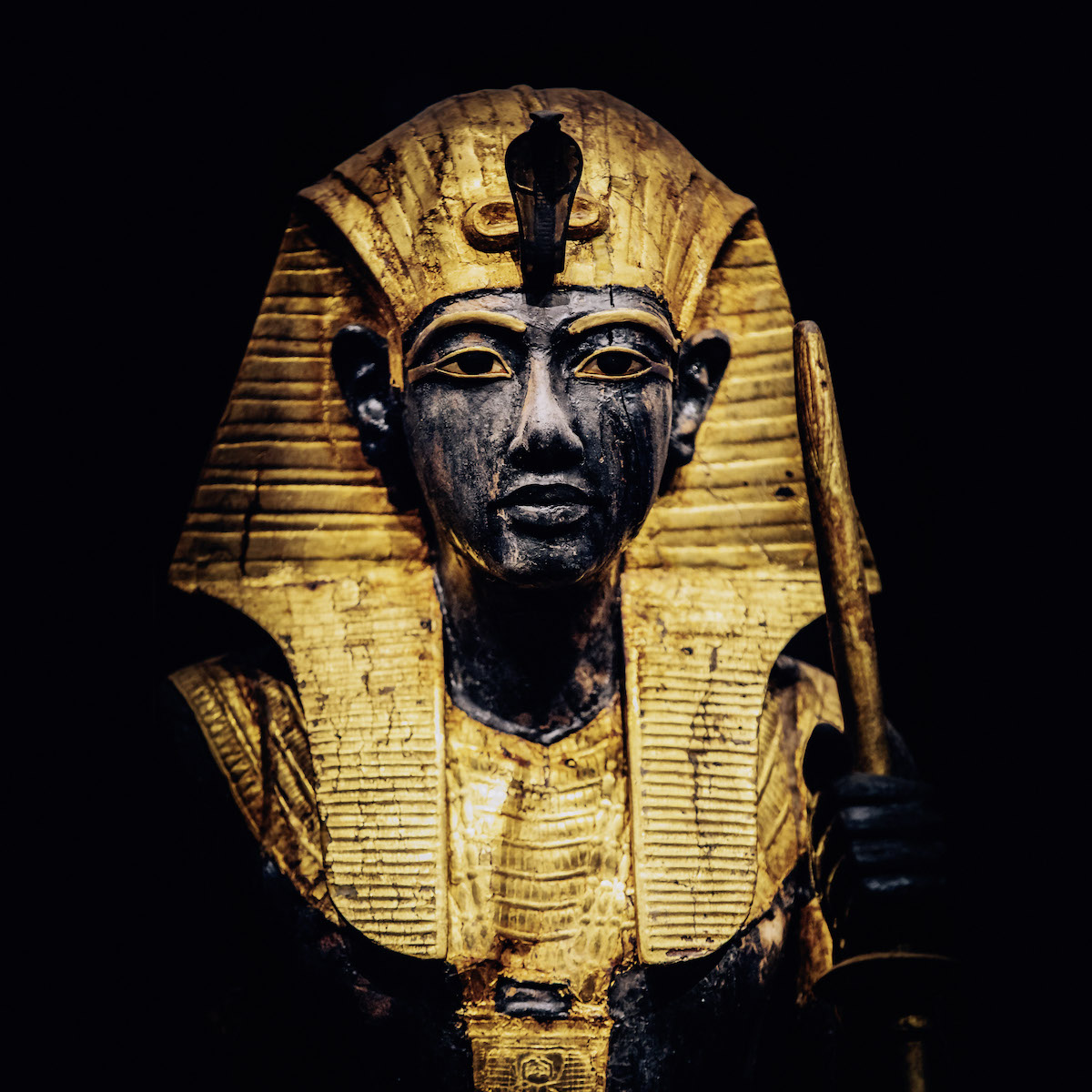 IMG
IMG
Staring into the distance, this life-size rendering of Tutankhamun’s spirit, or Ka, was one of two guardian statues that flanked the entrance to his tomb. It marks the boy-king’s journey from the darkness of the Netherworld to his rebirth at the dawn of a new day. His golden clothing and headdress exude majesty, and his wooden body, covered in bitumen coloured paint, represents the life-sustaining silt of the Nile.
Tutankhamun throwing a harpoon
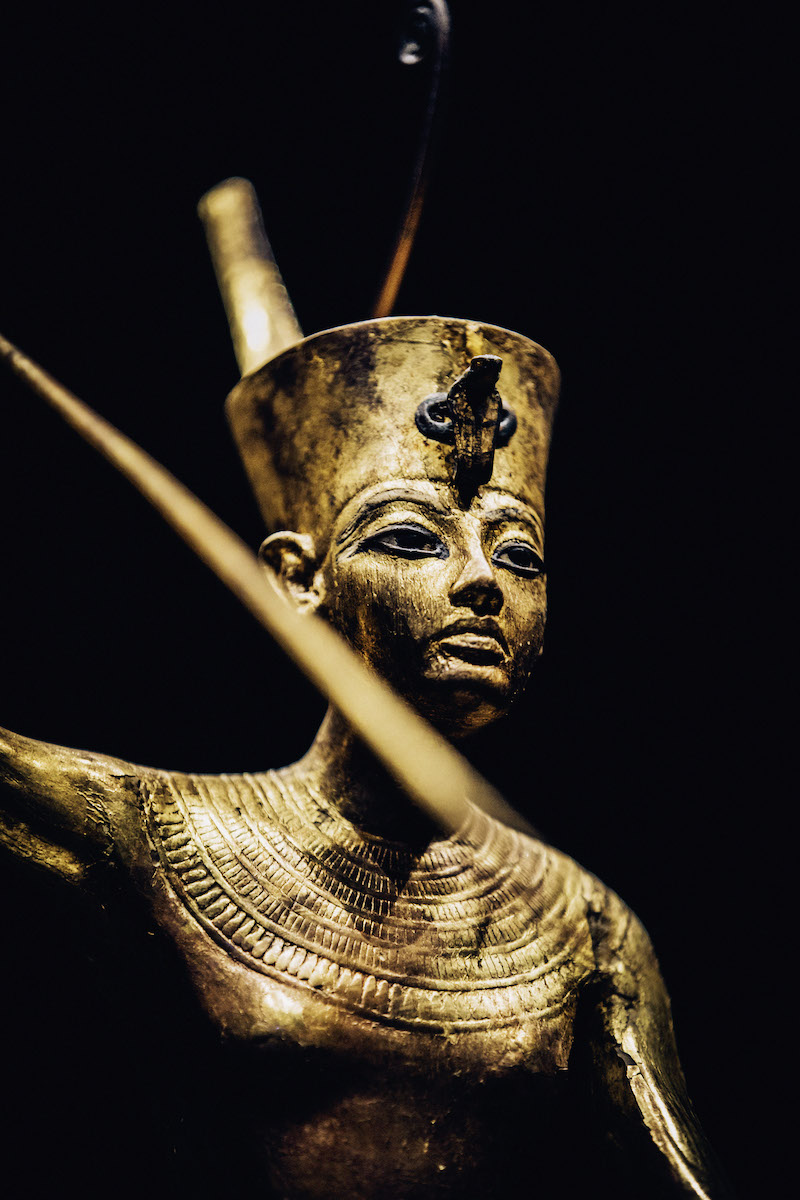 IMG
IMG
Standing on a small boat, or skiff, Tutankhamun clutches a harpoon to spear the evil hippopotamus, Seth. Pharaohs were believed to be the embodiment of Seth’s adversary, Horus, the falcon-god of the sky. According to mythology, Seth killed Horus’s father, Osiris.
Ceremonial shield
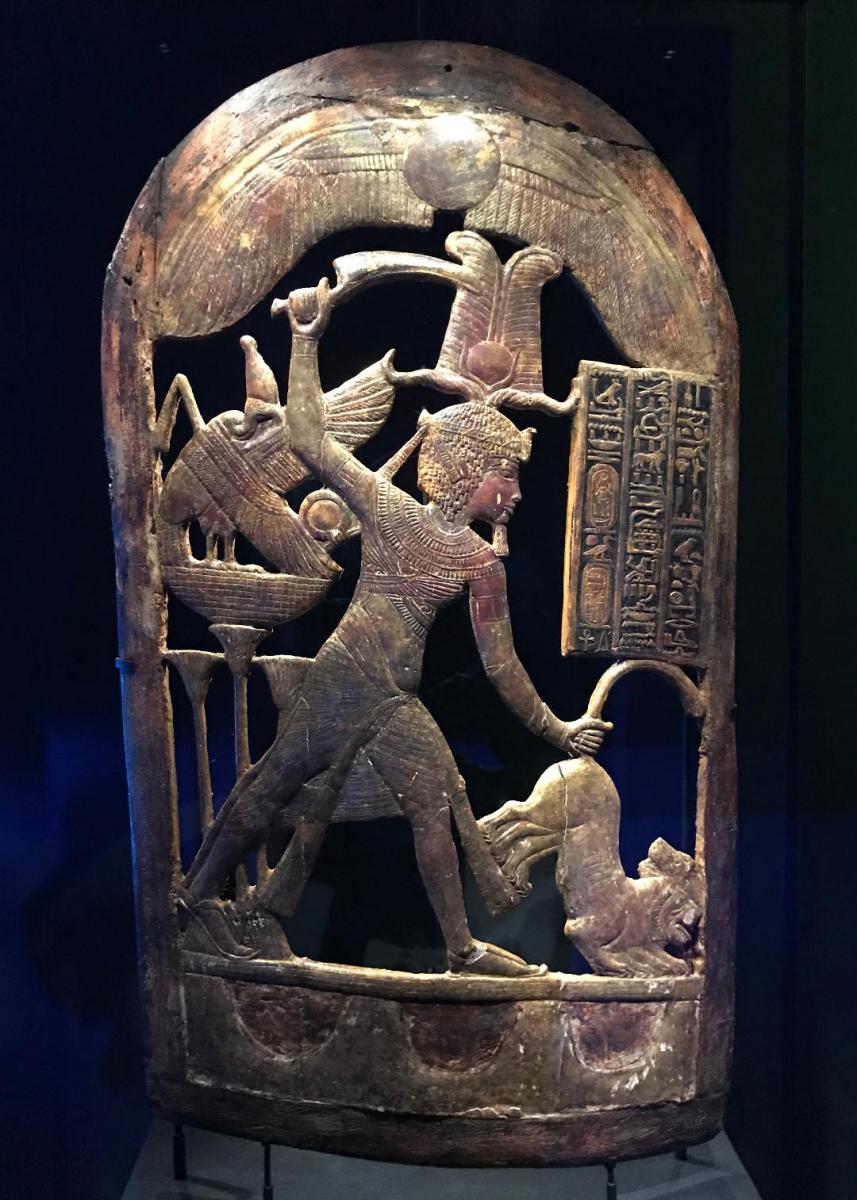
Brandishing a sword above his head, Tutankhamun stands ready to strike two lions on this decorative shield. According to Ancient Egyptian beliefs, lions represented the chaotic desert forces that surrounded the Egyptian lands. By killing the animals, Tutankhamun is demonstrating his ability to maintain balance and order. Here, Tutankhamun is associated with Montu, the falcon-headed god of war. He is wearing the royal Atefcrown, the headpiece associated with the deity Osiris.
Gilded shrine
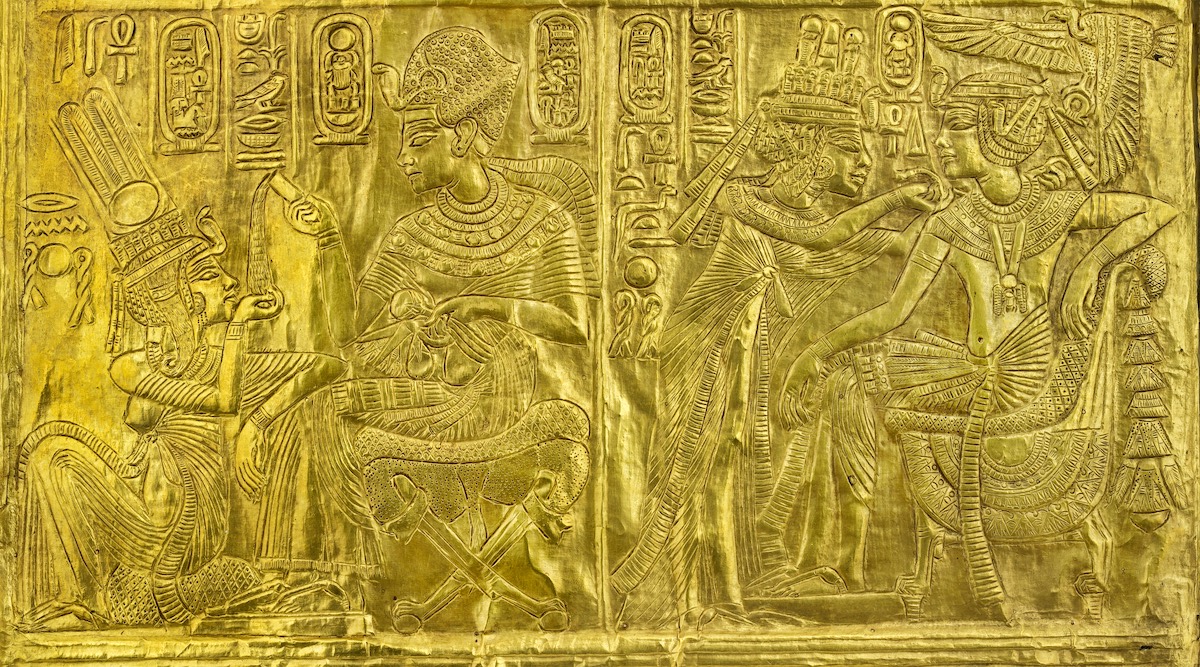 IMG
IMG
This intimate depiction of Tutankhamun and his wife is one of a series of images that adorn the sides of a small gilded wooden shrine. Tutankhamun married his half-sister, Ankhesenamun, at the age of 12, but little is known about their daily life. The mummified bodies of two babies found in Tutankhamun’s tomb are thought to have been those of the couple’s stillborn children.
Tutankhamun: Treasures of the Golden Pharaoh; Saatchi Gallery, London
Until 3 May 2020
About the Author
Elizabeth Oliver
JOIN OUR MAILING LIST
Become an instant expert!
Find out more about the arts by becoming a Supporter of The Arts Society.
For just £20 a year you will receive invitations to exclusive member events and courses, special offers and concessions, our regular newsletter and our beautiful arts magazine, full of news, views, events and artist profiles.
FIND YOUR NEAREST SOCIETY
MORE FEATURES
Ever wanted to write a crime novel? As Britain’s annual crime writing festival opens, we uncover some top leads
It’s just 10 days until the Summer Olympic Games open in Paris. To mark the moment, Simon Inglis reveals how art and design play a key part in this, the world’s most spectacular multi-sport competition



